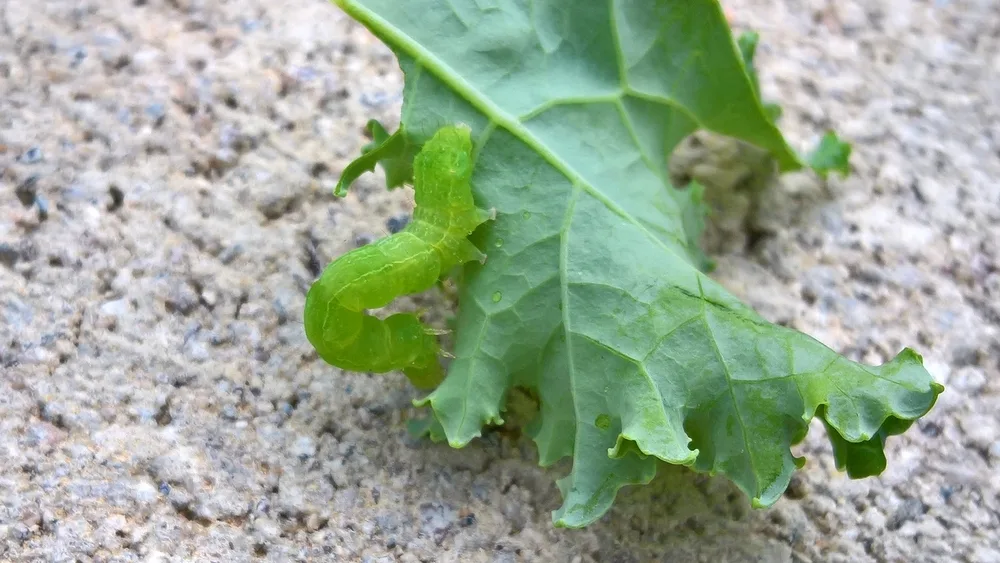
Cabbage is a must-have vegetable in your home veggie patch. It’s a robust plant that is among the easiest foods to grow, rewarding you with crunchy goodness in as little as two months.
However, there are several problems that cabbage growers face, the most prominent being the cabbage looper, an elusive little caterpillar that loves to nibble on cabbage leaves.
They don’t only munch on cabbage leaves. You’ll find them snacking on your cauliflower, kale, broccoli, and brussels sprouts too – any member of the Brassicaceae family.
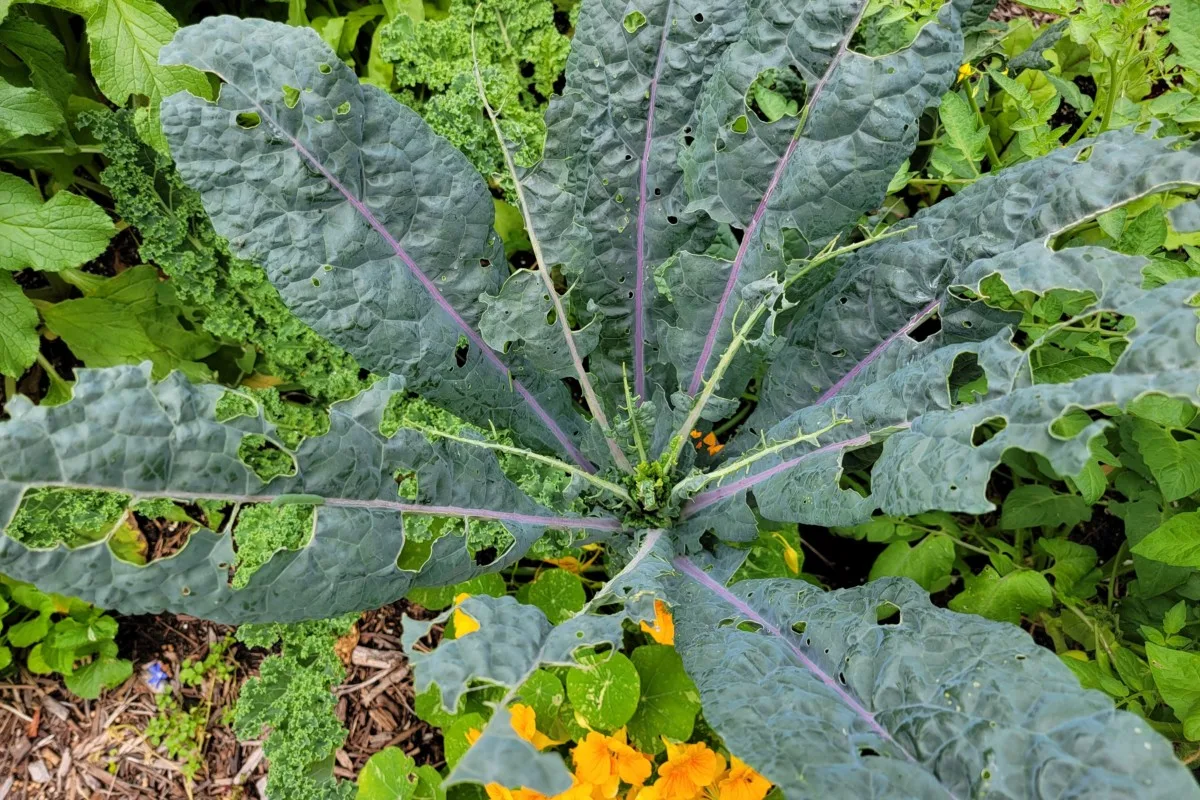
The damage they leave in their wake could be detrimental to the health of your crops, often causing stunted growth and ultimately leaving you with inedible plants.
But fear not – there are several natural and easy ways to control this pest if you spot them crawling on your cabbages.
What is a Cabbage Looper?
Identification
Their green color makes this little caterpillar easy to miss amongst the green of your cabbage leaves. But they’re easy to spot if you look carefully enough.
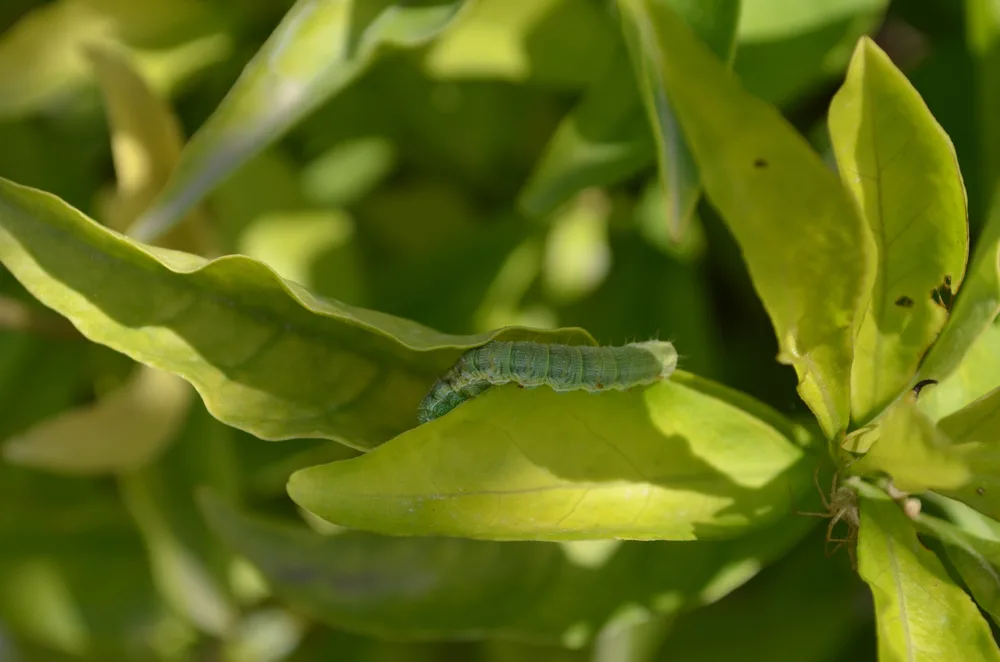
They’re relatively small caterpillars, growing to about 1 to 1 ½ inches long, identifiable by their unique movement – they arch their backs in a looping type motion, looking a little drunk when moving across leaves.
Adult loopers lay their eggs on the underside of leaves (a common breeding ground for most pests). Eggs have a yellow-white color and are typically dome-shaped with ridged patterns. They usually hatch in about a week, letting little cabbage looper larvae free to munch away.
Cabbage looper larvae start as small, almost transparent white caterpillars with black heads. As they mature they become green, develop white stripes along their backs and their bodies begin to look like cigars – narrow head ends that fatten out near the tail.
Older cabbage looper caterpillars have four sets of ‘true’ legs, three near their heads, with the fourth situated near their tail ends. They also have several pairs of prolegs (fleshy false legs) on different segments of their bodies.
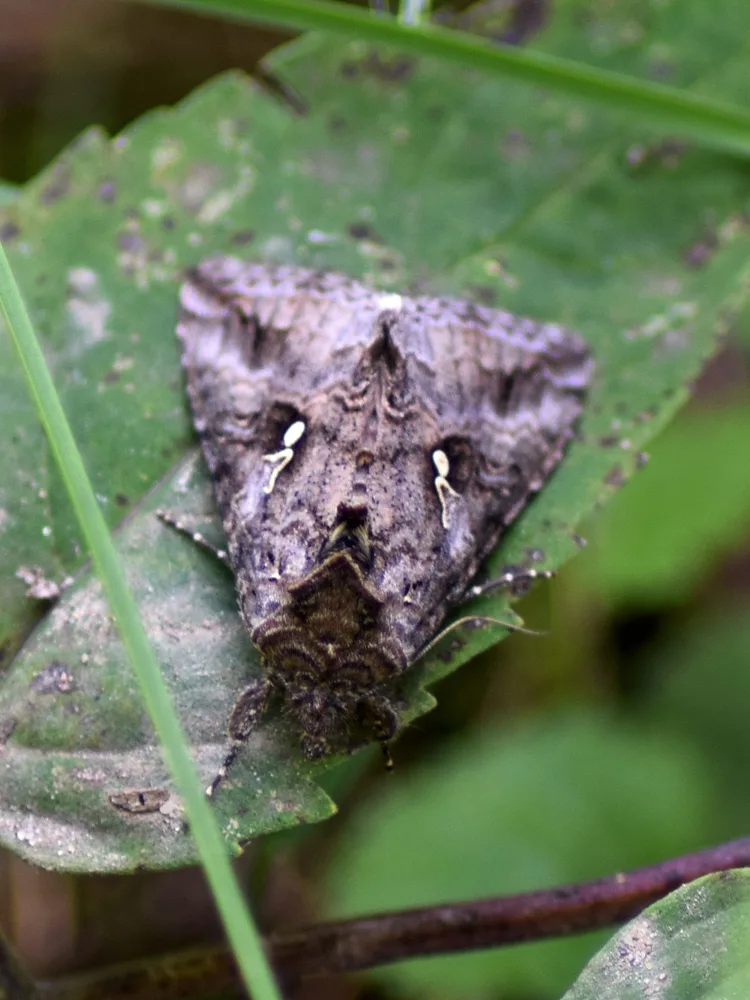
You can easily identify adult cabbage looper moths by their mottled gray color and interestingly marked wings. The center of each forewing has a silver spot and a ‘V’ or ‘Y’ or sometimes an ‘8’ type mark.
The Damage
If you can’t spot the loopers, you’ll quickly notice the damage they leave in their wake.
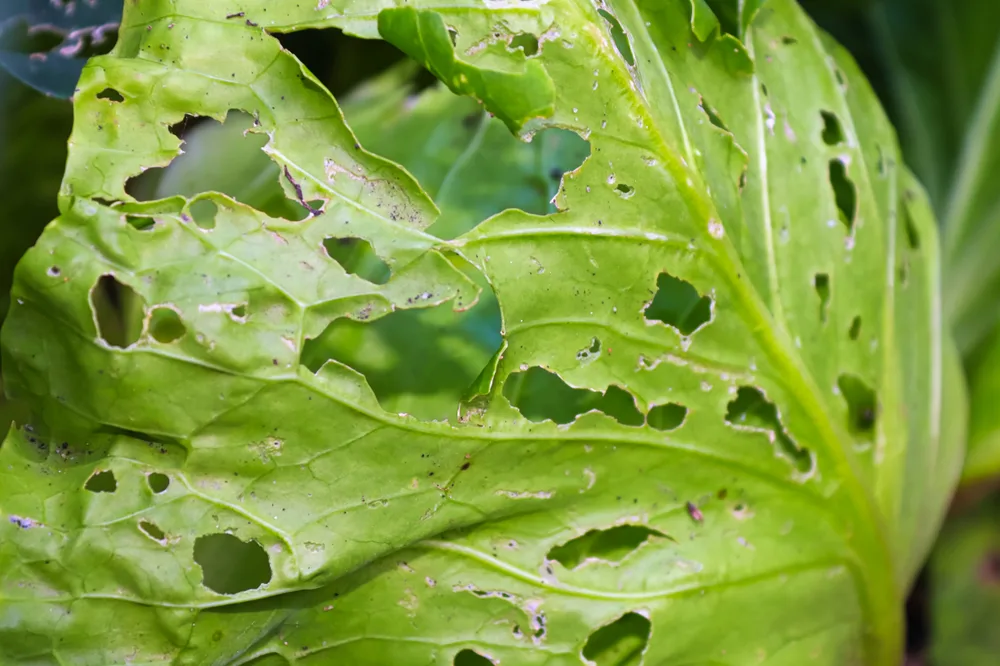
Young larvae tend to munch on the underside of younger, lower-lying leaves. You’ll quickly spot small, jagged holes on leaves, indicating a caterpillar problem.
Older cabbage loopers, however, venture to larger, older leaves, taking larger mouthfuls as they move along. They also love to munch on the tissue between the veins on leaves. If left, they’ll quickly strip your plants, causing skeletonization and defoliation.
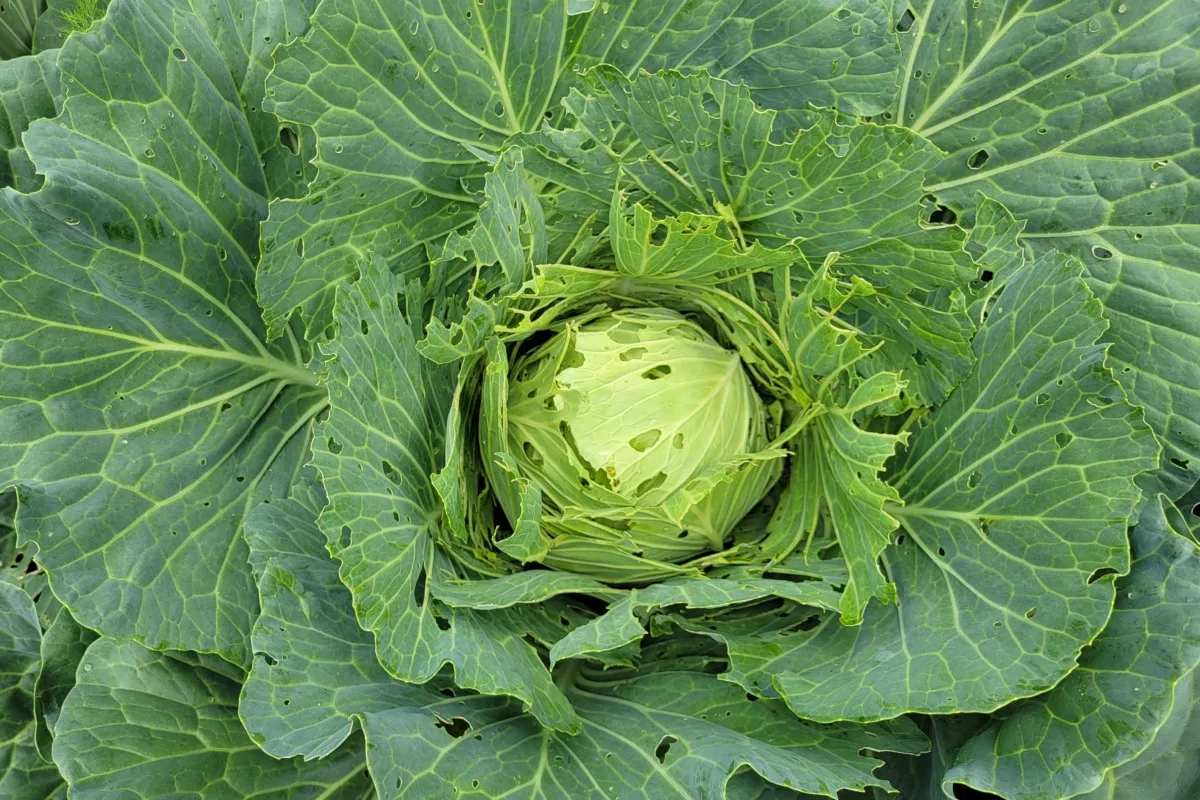
These two photos demonstrate the cabbage looper’s appetite. The photo shows the same cabbage a week later.
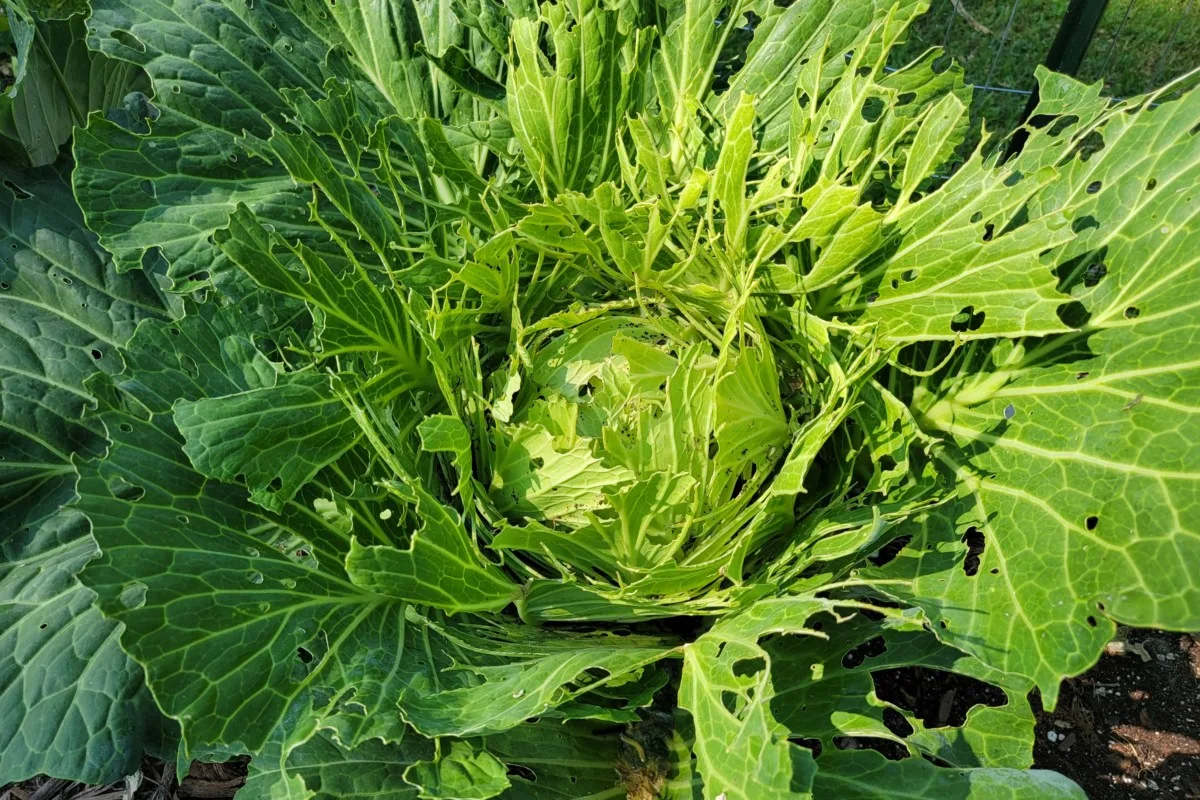
Sometimes the loopers even burrow into cabbage heads, leaving behind feces that can discolor the plant.
If left, your plants could be severely stunted, producing no heads and in some cases, becoming unfit for consumption.
A cabbage looper infestation sounds scary – and it can be if they’re left to chomp away in your garden. Luckily, there are several easy ways to deal with cabbage loopers and stop them from destroying your crunchy veggies.
7 Ways to Control Cabbage Loopers
1. Manual Removal
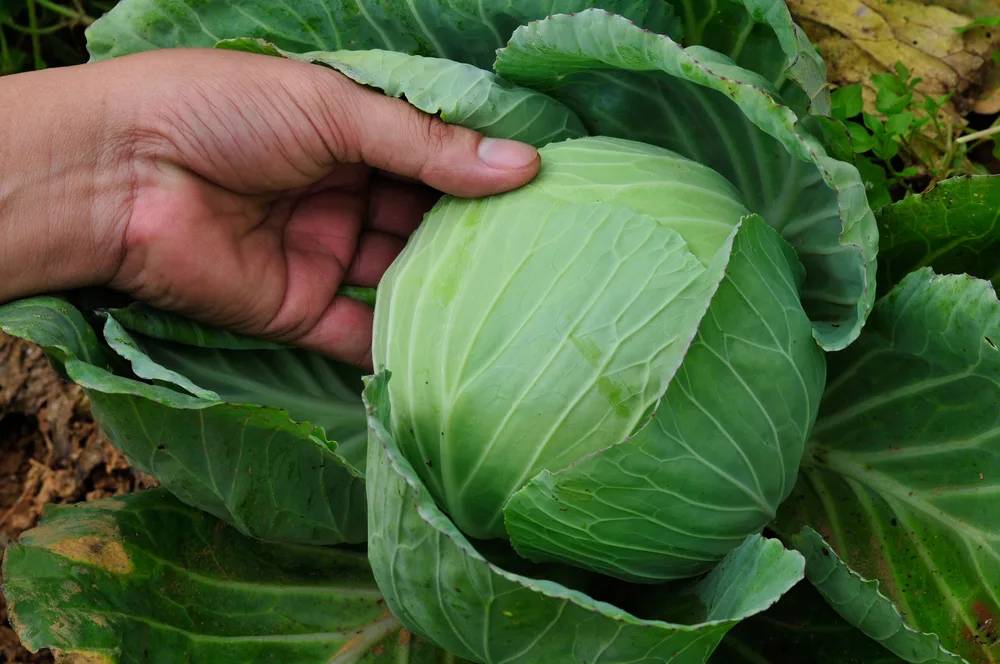
Removing the cabbage looper by hand is probably the easiest and safest method to opt for. It’s also the one method pretty much everyone can do.
Pop on your favorite gardening gloves, starting the hunt when temperatures are still nice and cool; preferably early morning or late evening.
Simply pull the pesky little caterpillars off the leaves and squish them between your fingers. Or, you can pop them into a bucket or jar of soapy water to drown them. This method can be used to deal with several pests, from aphids to colorado potato beetles.
You can also scrape the eggs off the underside of leaves to get rid of cabbage loopers before they even hatch.
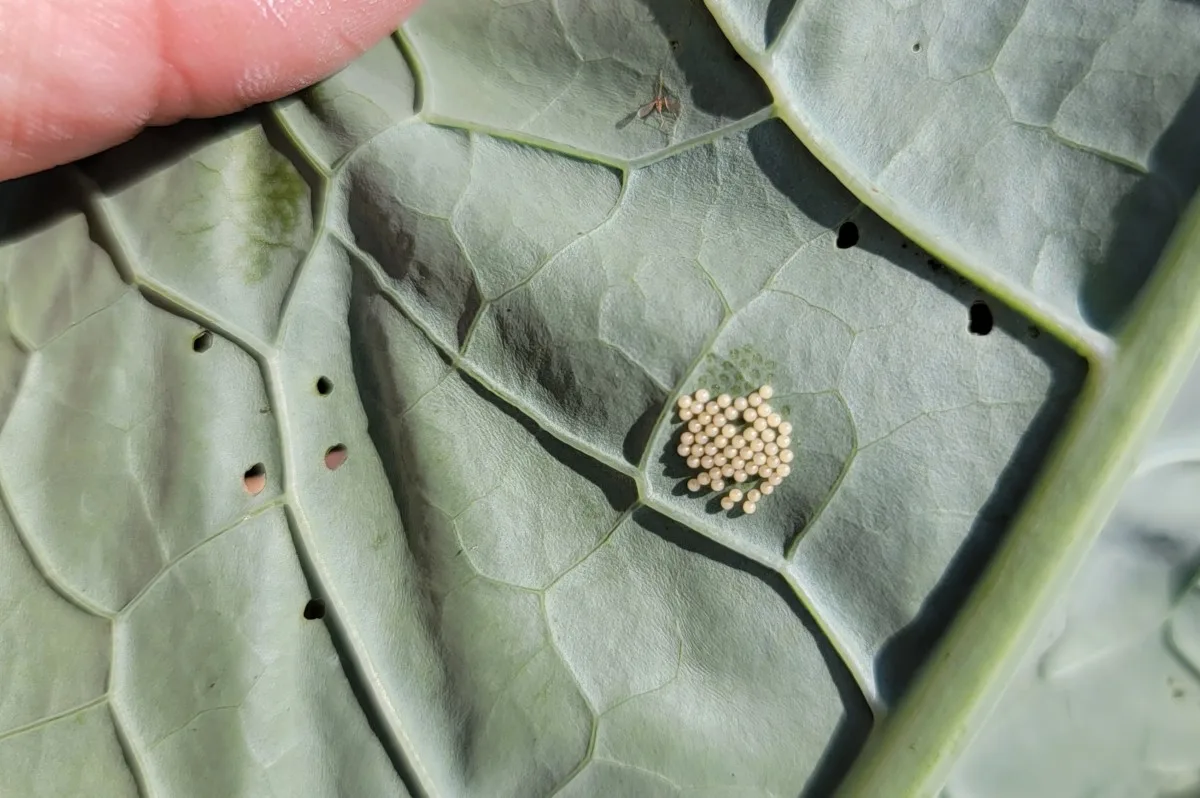
Picking cabbage loopers (and other pests) off your plants is most effective if you do it often. Make inspecting and picking pests a weekly garden routine to keep your cabbages and other vegetables as healthy and hole-free as possible.
2. Row Covers
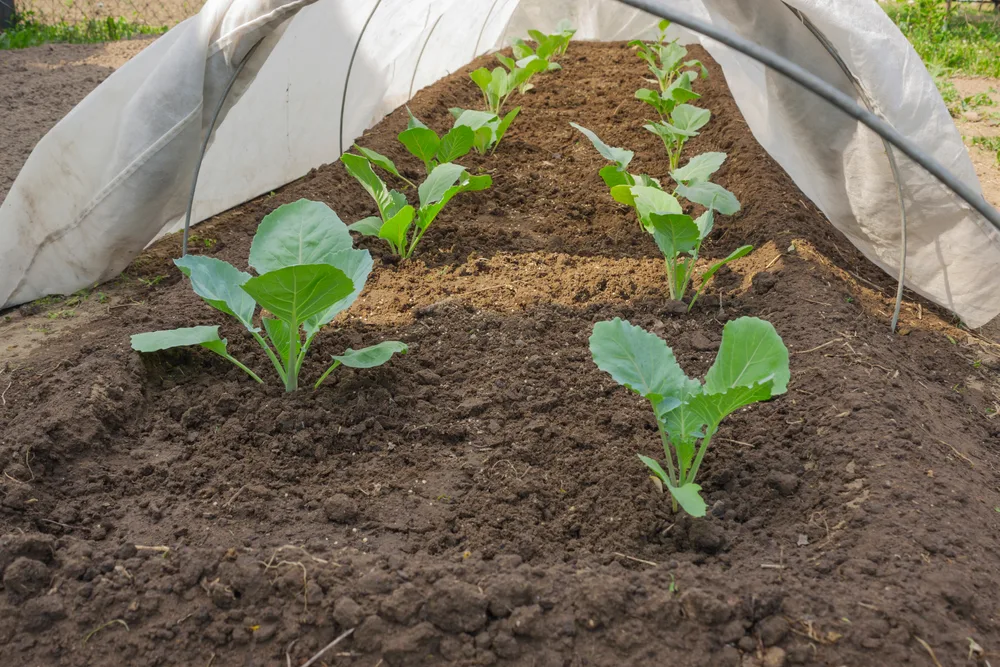
One of the best ways to stop cabbage looper moths from going anywhere near your cabbages, let alone lay their eggs, is by using floating row covers.
Row covers are a gardener’s best friend. They not only protect your plants from cabbage loopers but from a variety of other pests too (including aphids). The correct row covers will also protect your plants from harsh heat and even frost.
You can buy row covers from your local garden center, or you can make your own. They’re not difficult to build – all you need is some shade cloth, PVC piping or wire, and a little bit of time.
3. Choose Colorful Cabbages
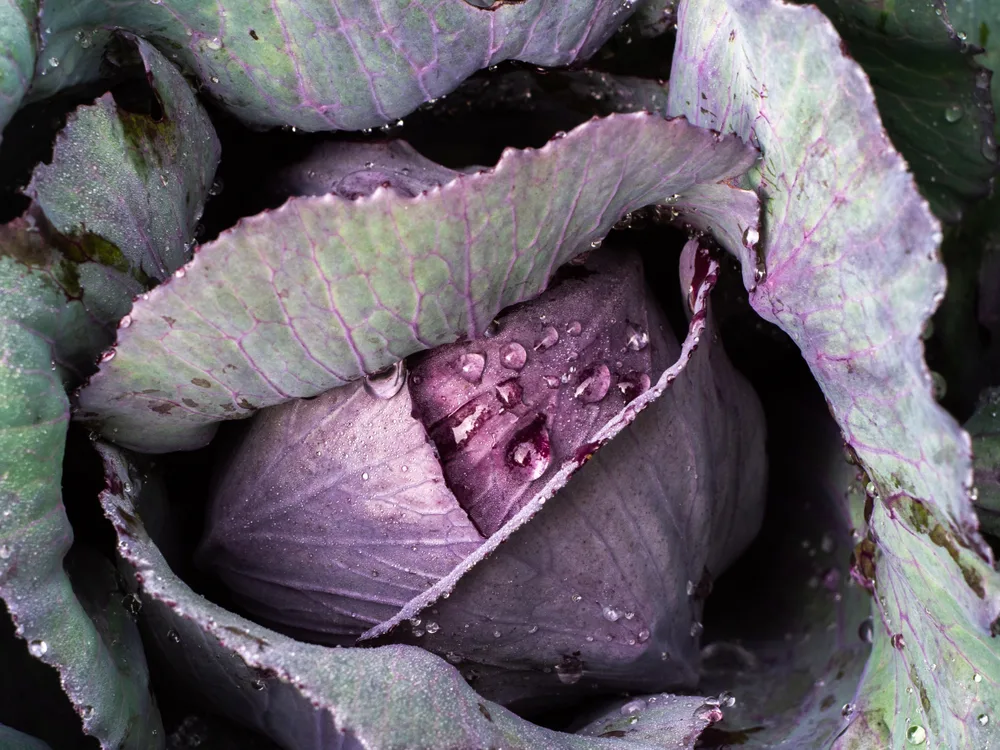
Some theories suggest that green or pale pests avoid bright-colored plants as they don’t blend well on them.
Studies also show that the antioxidant that red and purple veggies are rich in, anthocyanin, is mildly toxic to caterpillars and a few other pests.
Plant colorful veg instead of the classic green to (potentially) keep caterpillars away.
4. Companion Planting and Beneficial Insects
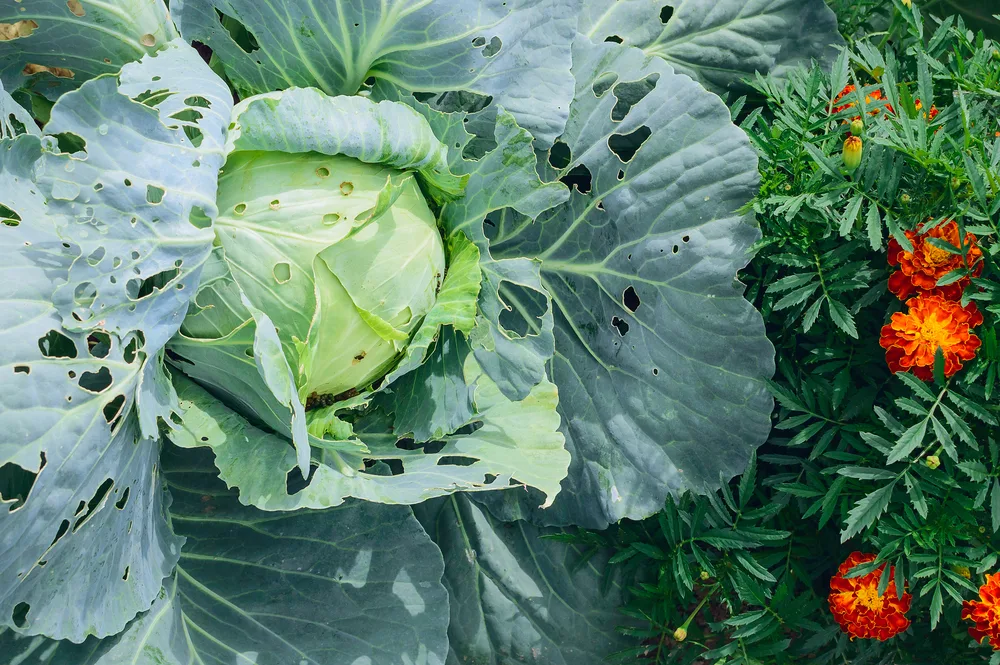
Planting companion plants is a wonderful way to increase biodiversity in your garden and it can help keep cabbage loopers from taking root in your cabbage patch.
Here are 18 Cabbage Family Companion Plants & 4 To Never Grow Together
In some cases, certain plants act as traps that can attract cabbage moths, keeping them from laying eggs on your cabbages. Nasturtiums are a great ‘trap crop’ to have in your garden, and they have several other uses in your kitchen and around your home.
How to Utilize Trap Crops To Save Your Garden From Pests
It’s important to still remove cabbage moths and eggs from your trap crops, or else they might spill over, causing damage anyway.
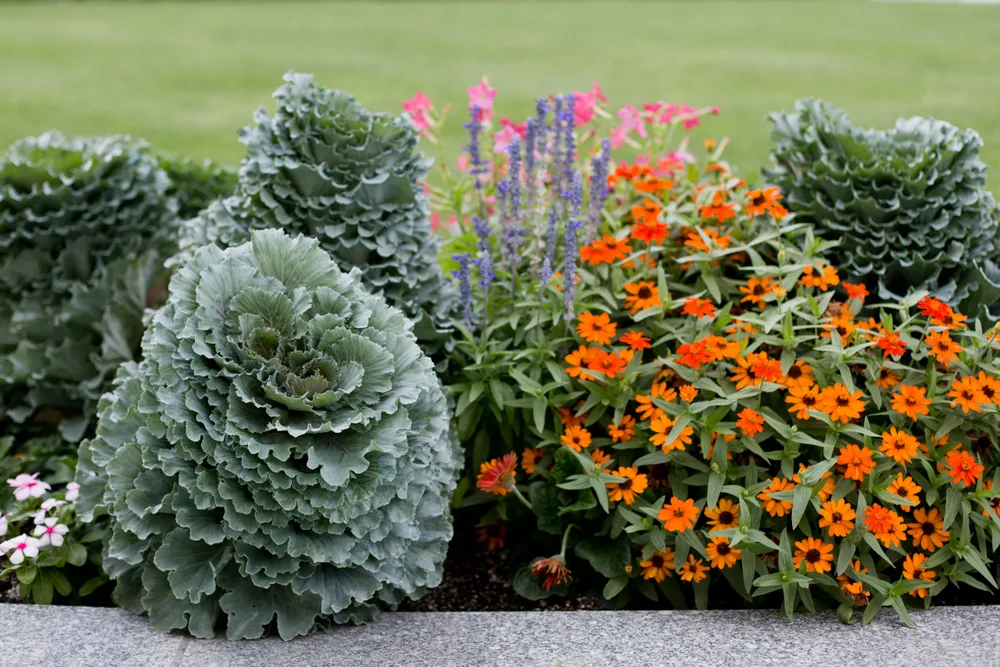
You could also introduce plants like dill, onions, and even lavender which may deter these pesky pests.
In some cases, some plants attract beneficial insects that are the cabbage looper’s worst enemies.
Marigolds, for example, attract a myriad of insects that’ll munch away at cabbage loopers before they destroy your cabbages and other vegetables. Ladybugs, spiders, and small birds are all-natural predators of cabbage loopers. These can be introduced into your garden manually or by planting plants they’re attracted to.
How To Release Ladybugs Into Your Garden (& Why You Should)
A truly wonderful beneficial insect to have in your garden is the parasitic wasp, which made our list of 12 Garden Bugs You Should Never Kill. They deter and kill many types of worms and caterpillars, including loopers. These wasps lay their eggs on or in caterpillars and their pupae. Once these eggs hatch, the wasp’s larvae feed on the host caterpillar, eventually killing it.
5. Practice Good Garden Hygiene
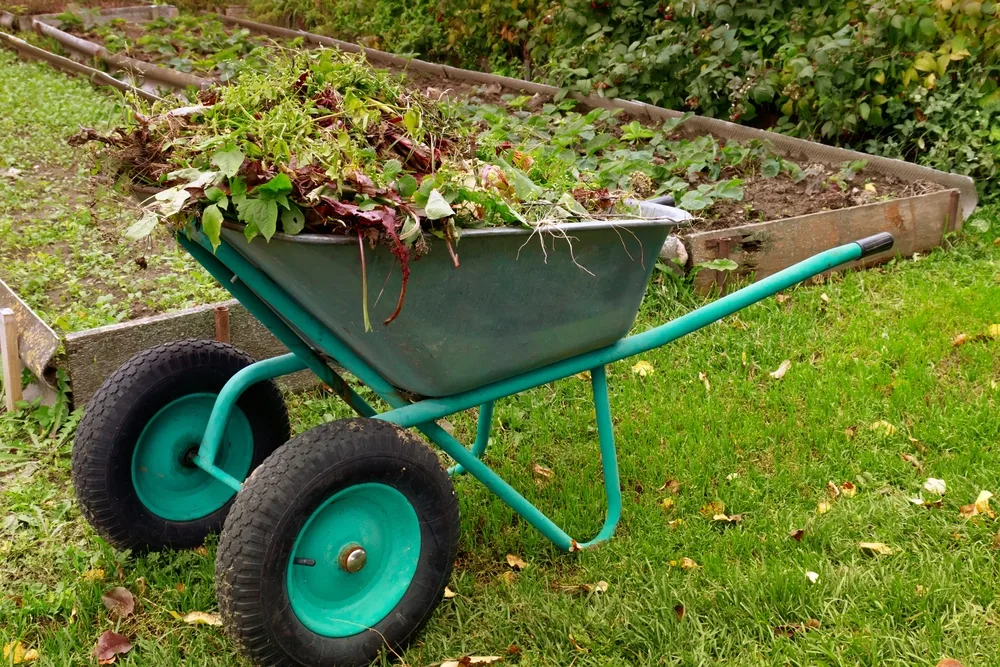
Preventing and managing cabbage looper infestations starts with practicing good garden hygiene. This should be a habitual practice anyway, but if it’s not, you should incorporate it into your weekly garden routine.
Cabbage looper pupae can overwinter in cabbage and vegetable debris, so always ensure there is no plant debris in and around your vegetable patch.
Part of good hygiene practices includes clearing away any and all weeds too.
6. Bacillus thuringiensis (B.t)

Bacillus thuringiensis, or Bt for short, is a naturally occurring bacteria that lives in soil. You’ll often find it in store-bought organic pesticides. It’s highly toxic to caterpillars and moths and is one of the best and most effective ways to get rid of cabbage loopers.
It works by stopping the larvae and loopers from eating by forming a crystal-shaped protein, eventually killing them.
Bt is available at most nurseries or garden centers as a spray or concentrated mix, and is safe to use on edible plants.
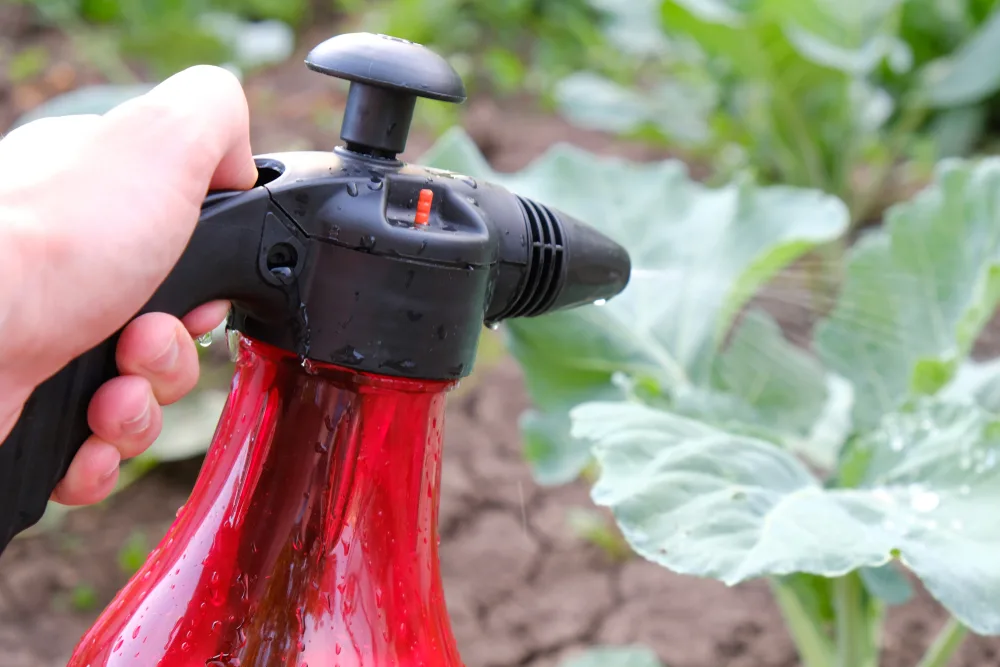
7. Neem Oil
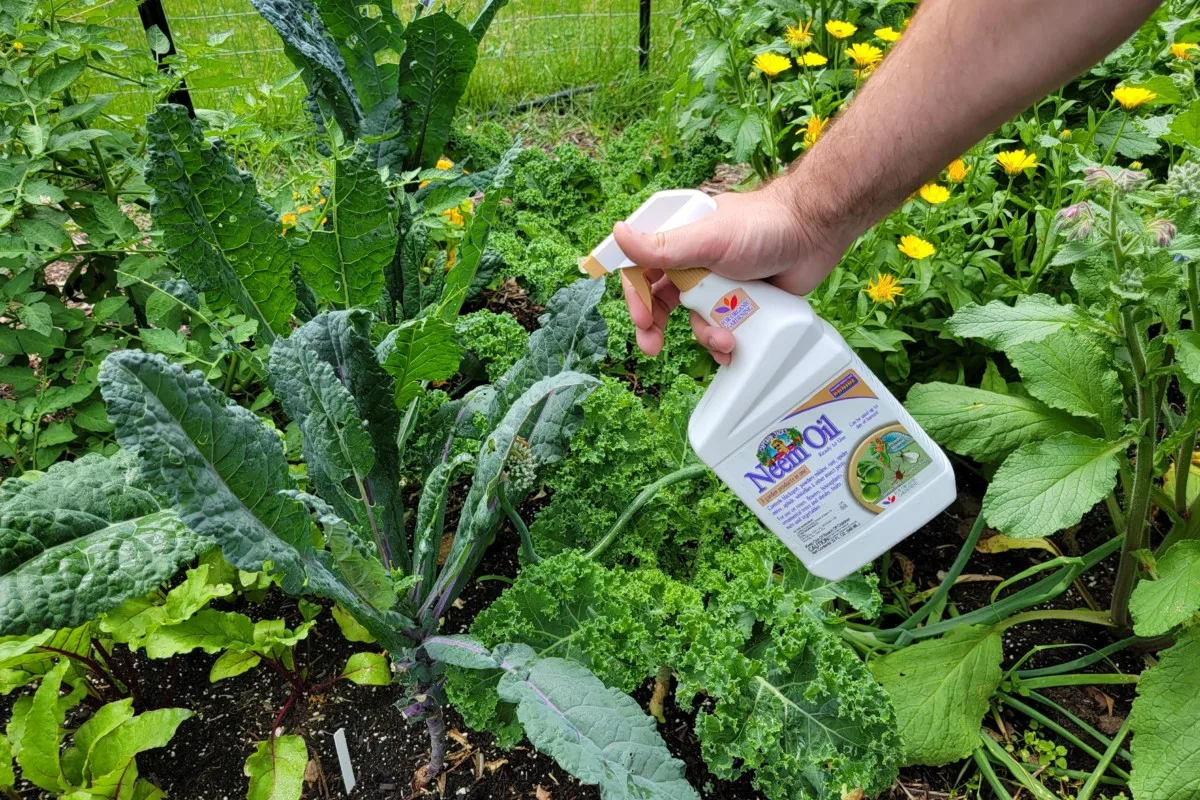
Neem oil is a staple in many a gardener’s shed. This natural oil acts as an insecticide that controls and deters many pests. Neem oil is one of the few insecticides that won’t damage your plants, but it can harm some beneficial insects and is best used sparingly.
It coats your plants in a thin layer of oil that repels cabbage loopers, and if sprayed on looper eggs it can prevent them from hatching at all.
You can easily make your own neem oil spray by mixing two cups of water and one tablespoon of neem oil in a spray bottle. Spray your oil when needed, paying close attention to the underside of leaves. Avoid spraying on sunny days to prevent the burning of the foliage.
Dealing with a cabbage looper is key to saving your harvest. Luckily, they can be managed using easy natural organic methods. Covers, handpicking, planting companion plants that attract beneficial insects are great ways to keep this nasty pest from destroying your cabbages. There are even a few natural organic sprays that aren’t too detrimental to the rest of your garden to rid your veggies of this pest.

Get the famous Rural Sprout newsletter delivered to your inbox.
Including Sunday musings from our editor, Tracey, as well as “What’s Up Wednesday” our roundup of what’s in season and new article updates and alerts.

